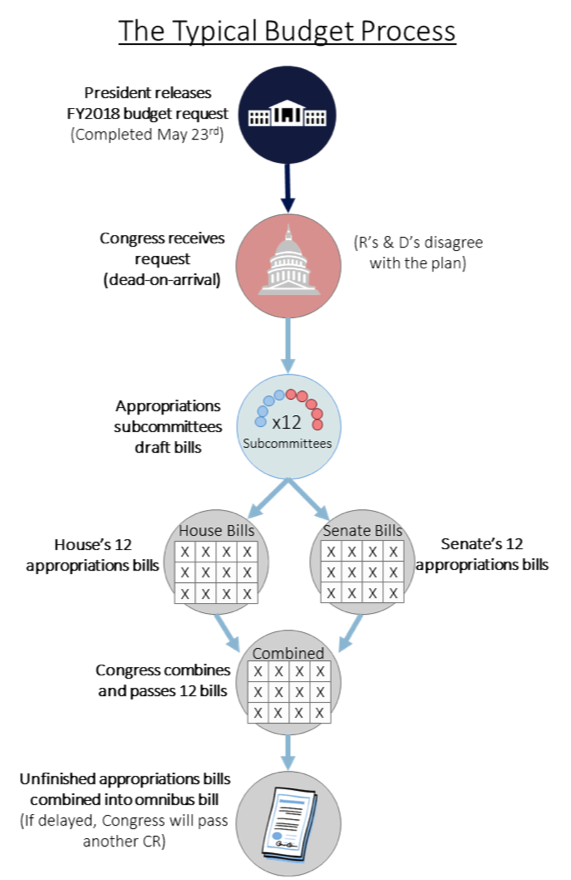Government affairs
Legislative Updates

Here’s how the budget process is supposed to work.
Typically, the budget process begins with the president sending a budget request to Congress each February for the coming fiscal year. This is expectedly delayed with new, incoming presidents and administrations. The House and Senate use this request as a guide in their respective budget committees while writing their own budget resolutions. These resolutions are drafted to provide a framework for the allocation of the committees’ spending authority for the fiscal year. Once those resolutions pass, the committees begin “marking up” through each of the appropriations subcommittees, meaning the subcommittees determine how the funding is appropriately distributed, according to programs.
Following a mark-up, the House and Senate would normally vote on their appropriations bills separately, then meet to reconcile differences between the bills, before presenting a finalized, identical version of each bill to be voted on one last time in each chamber. After passing both the House and Senate, each of the 12 appropriations bills goes to the president to be signed into law and, voilá, funding is complete.
However, nothing about the Trump administration or our one-party Congress has been predictable so far.
Here’s how the FY18 budget process has been working so far
With Congress struggling to adapt to an unconventional administration, it is clear that tradition and process will not prevail. Congressional Republicans have signaled that they will approach the budget process non-traditionally, opting instead to roll all appropriations into a single bill, known as an “omnibus.” This is done to avoid bipartisan debate and scrutiny over each individual bill, to avoid a Democratic filibuster in the Senate, and to pass with only a simple majority in each branch of the Republican-controlled Congress.
The budget resolution process is expected to include “reconciliation instructions” that mandate each of the 12 committees that authorize funding to identify budget savings, typically by eliminating programs or reducing services or funding levels.
Here’s how we expect the budget process will continue
Congressional Republicans, however, are still so divided on how to proceed that even an omnibus plan is struggling as of now. Talks are turning instead to a “minibus,” a four-bill, national security-related appropriations package to appear on the floor ahead of the August recess. The hope is that when the House returns to Washington in September, they can hammer out the remaining disagreements and push through the rest of the omnibus before the fiscal year ends on Sept. 30.
Here are some useful definitions
Appropriation: The provision of funds, through an annual appropriations act or a permanent law, for federal agencies to make payments out of the Treasury for specified purposes.
Filibuster: Informal term for any attempt to block or delay action on a bill or other matter by debating it at length, by offering numerous procedural motions, or by any other delaying or obstructive actions. Only the Senate may use this tool and only over major legislation requiring 60 percent of the vote.
Fiscal Year: The fiscal year is the accounting period of the federal government. It begins on Oct. 1 and ends on Sept. 30 of the next calendar year. Congress passes appropriations legislation to fund the government for every fiscal year.
Markup: The process by which congressional committees and subcommittees debate, amend and rewrite proposed legislation.
Minibus: A minibus appropriations measure generally refers to a measure including a few regular appropriations bills.
Omnibus: An omnibus bill is a budget that encompasses all 12 appropriations bills into one bill, often used when Congress and the President can’t agree on passage of 12 individual spending bills.
Reconciliation: Reconciliation is a legislative process by which Congress changes existing laws to conform tax and spending levels to the levels set in a budget resolution, allowing for expedited passage with a simple 51-vote majority in both the House and Senate.



